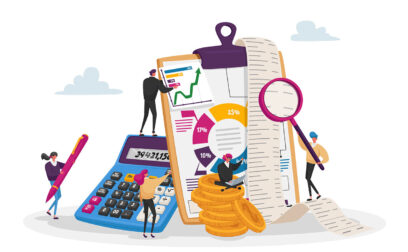Understanding the steps you can take to boost cash flow is important for small businesses. Businesses that successfully manage cash flow tend to be more profitable in the long run, while those that lack the cash to pay for bills, rent and wages are more likely to fail.
This guide explains how to boost cash flow and keep your business running efficiently.
What is cash flow?
Cash flow is a measurement of the amount of money you have coming in and going out of your business over a period time.
If your cash flow is positive, that means you have more money coming into your business than you have going out. You’ll therefore be able to pay your suppliers, rent, employees and taxes on time.
On the other hand, if your cash flow is negative, you’ll have more money going out of your business than you have coming in. And that can make it difficult to meet your bill payments and other expenses.
Why is cash flow important?
Cash flow is important because it enables you to meet your existing financial obligations and also plan for the future. Maintaining a healthy cash flow can help ensure the smooth day-to-day running of your business and help set it up for success.
Understanding your cash flow will mean you can forecast company profits more accurately and identify opportunities for investment, while you can also build up cash reserves to cover you in times of difficulty.
How do I boost my business’ cash flow?
To help boost your business’ cash flow, take a look at the steps below:
Negotiate quicker payment terms
Making sure your clients pay on time is crucial for your business, particularly after a big sale has been completed. When clients take a long time to pay up, your accounts receivables start to grow and you could end up in a negative cash flow shortage.
For this reason, it’s worth negotiating with your clients to see if the payment deadline can be moved forward. You might also want to ask for a partial deposit upfront to give you cash straight away.
If a client is late with a payment, be sure to chase it immediately. If you feel hesitant about this or are prone to forgetting, it’s worth investing in invoice management and accounting software which will send out automatic payment reminders and keep track of your payments on your behalf. Some will also take electronic payments.
Create customer incentives and penalties
Another way to encourage clients to pay early is to offer a discount. For example, you might offer a 2% discount if they pay within the first 10 days, and 1% if they pay within 11 to 20 days. Alternatively, you could consider offering a discount on future orders or gift certificates.
You might also want to consider charging fees for late payments. However, it’s crucial that you highlight these fees when you draw up the initial client contract and again when you invoice. Be sure to clearly explain how much the fee will be and when it will apply.
Check your accounts payable terms
Although you want to speed up the process of receiving payments, you ideally want to slow down the process of making payments. When a bill comes in, take the time to read through the terms to see how long you can wait before making the payment as this can reduce the risk of a cash shortage.
There’s also no harm trying to negotiate with your vendors. Ask whether they’d be happy to offer longer payment terms in return for your business.
Reduce unnecessary spending
As with personal finances, businesses should take the time to go through their expenditure and work out where cutbacks and savings can be made. For example, if you’re covering expensive mobile phone bills for your employees, see whether you could switch to a better deal and save money.
It’s also worth carrying out an inventory check. Make a list of any products that aren’t selling as well as others, and instead of buying more, get rid of them, even if you have to sell them at a discount. Products that don’t sell well tie up a lot of cash and could hurt your cash flow.
Lease equipment instead of buying
Rather than worrying about the high upfront costs of buying new equipment, consider leasing items instead. When you lease equipment, you’ll pay a fixed monthly fee which will enable you to make smaller payments that don’t damage your cash reserves. But make sure you check the terms of the lease carefully.
Study your cash flow patterns
Carrying out a cash flow analysis will help ensure you’re prepared for any positive or negative cash flow swings. Analysing your business history will help you to spot trends and patterns so that you can start preparing for the next swing ahead of time.
Create and maintain a cash flow forecast
Accurate cash flow forecasting is important for all businesses as it can help you to work out whether you’re going to run out of money and enable you to plan ahead. It might help you assess whether you need to reduce overheads or find new investment.
A good cash flow forecast will show your business’ income and outgoings for a set period of time, whether that’s a few weeks or several months. To do this, you’ll need to:
- Collate all the cash you have coming into the business
- List all your planned expense payments
- Calculate the net cash balance
Carrying out these steps will help you to predict when your cash flow might be positive or negative so that you can act accordingly. If your cash flow is set to be positive for several months, you might able to consider expanding or investing. But if it’s likely to be negative for a while, you will need to take steps to ensure you have sufficient cash to cover your bills.
If your business has been running for several years, you might be able to use sales data from previous years to guide your estimates.
Consider invoice finance
Finally, invoice finance can also enable you to improve cash flow. It’s a way of borrowing money using your unpaid invoices. If you’ve issued invoices to clients but haven’t yet been paid, invoice finance can enable you to access that cash early.
The lender uses the unpaid invoices as security for funding, and will typically advance you between 75% and 95% of the invoice value upfront. The lender will then collect payment for the invoices directly from your customers, deduct a fee and pay you the remaining balance.
This can be particularly beneficial if you’re a business with high-value invoices which could affect cash flow if they go unpaid.

































 yet? Register here!
yet? Register here!